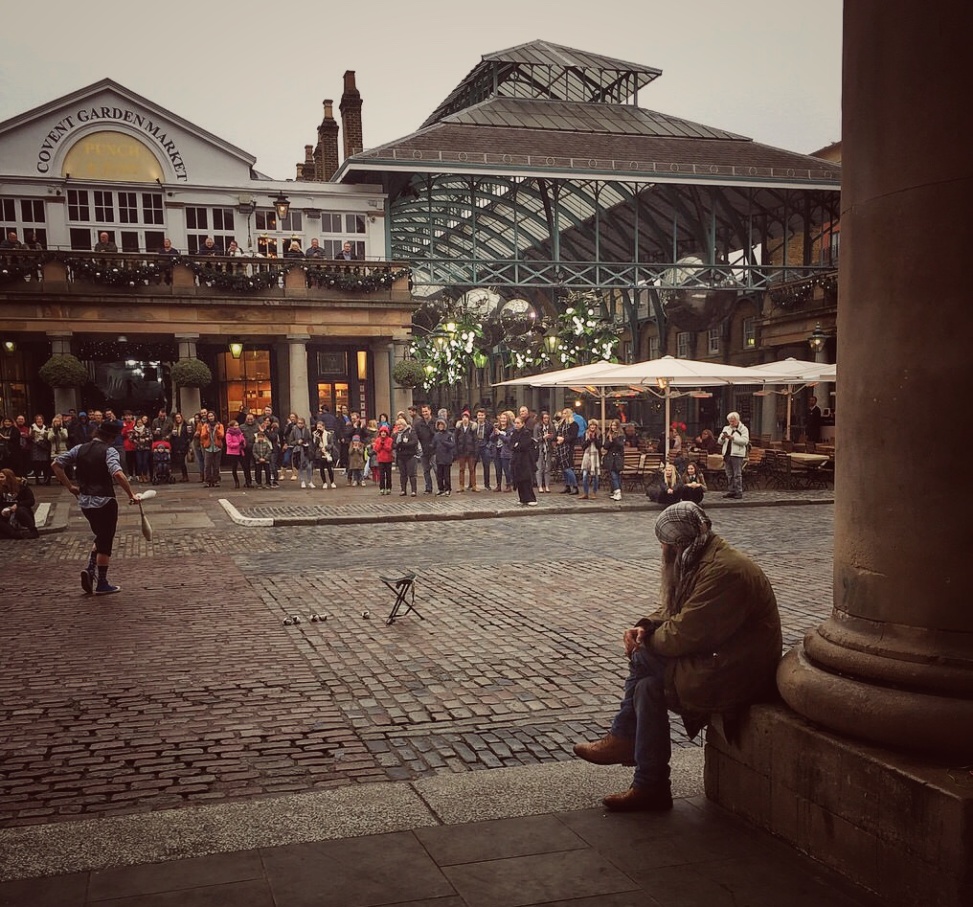The man was sitting on the base of one of the pillars of the portico of St Paul’s Church in Covent Garden. He was taking his time over a roll up cigarette watching the world go by, his attention distracted by the juggler who was entertaining the tourist hordes. Although homeless, he affected the disinterested, seen-it-all-before pose of a stagehand enjoying a quiet five minutes for himself backstage while the show goes on front of house. I watched him for quite a while. Oddly zen-like and still except for his arm transporting the cigarette slowly to and from his mouth, he may have been invisible to the crowd watching the juggler.
St Paul’s, Covent Garden, which was built in 1633 is known as the Actors Church. It has seen the rise of opera houses and theatres around it locally and became associated with the acting profession from very early days. The Theatre Royal, Drury Lane opened nearby in 1663. Pepys saw an early version of Punch and Judy under the portico at the front of the church in the same decade and recorded it in his diary – the first mention of this tradition in England. It is also under this portico where Eliza Doolittle meets Henry Higgins in the very first scene of Pygmalion – later adapted as My Fair Lady. Just about where the juggler played today is the spot Eliza got knocked into the Covent Garden mud and spilled the flowers she was trying to sell to the gentle folk who were hiding from the rain under the cover of the church’s portico.
London: always the poor and the not at all poor existing cheek by jowl, living completely different lives.

2 Comments
2 Pingbacks